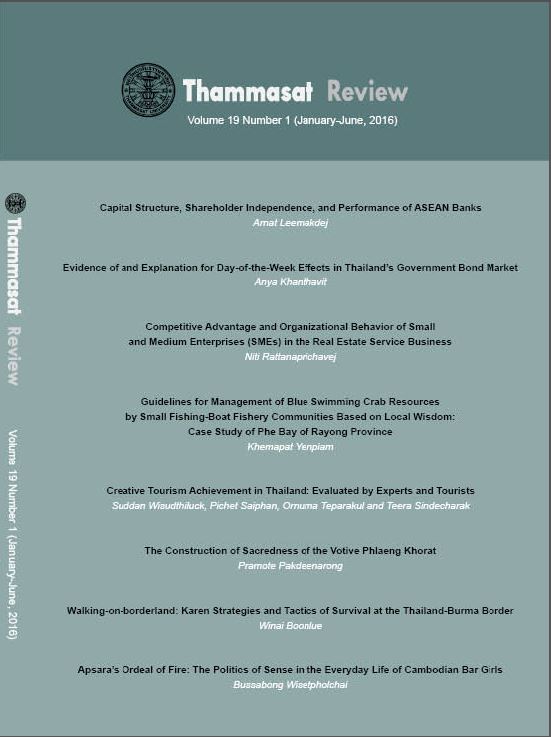The Construction of Sacredness of the Votive Phlaeng Khorat
Keywords:
Votive Phlaeng Khorat, Local Identity, Sacredness, Sign HealingAbstract
This article analyzes the construction of social memory and local identity through practices of votive Phlaeng Khorat. It is a folk performance that is adapted from Phlaeng Kom and ‘traditional’ Phlaeng Khorat to become a performance for the reverence of the spirit of Thao Suranari in Nakhon Ratchasima province. Historical studies, such as Saipin Kaew-ngarmprasert (1995) and Chatri Prakitnonthakan (2007), explain that the performance is controlled by the state. However, anthropological studies, for example, Charles F. Keyes (2002), point out that the meaning system from locality-based construction depicts a resistance to the state. Here I argue against those two studies by applying Clifford Geertz’s concept of interpretation of cultures. I also present a review from documentary research that is related to the development of votive Phlaeng Khorat. The finding is that votive Phlaeng Khorat has been developed in the context of social development for it to make its own way into modern society. In the context, the local people juxtapose the feelings of uncertainty and the multiple signs of modernity. The identity presentation of votive Phlaeng Khorat is included with nationalism signs constructed by elite and the localism signs formed with social memory of the local.
Downloads
Published
How to Cite
Issue
Section
License
The opinions and ideas expressed in all submissions published in Thammasat Review are solely that of the author(s) and do not necessarily reflect that of the editors or the editorial board.
The copyright of all articles including all written content and illustrations belong to Thammasat Review. Any individuals or organisation wishing to publish, reproduce and distribute a particular manuscript must seek permission from the journal first.








